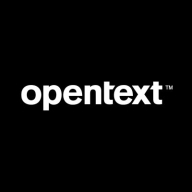

Oracle WebCenter and OpenText Documentum Content Management are competing content management solutions. OpenText Documentum often has the advantage due to its robust features, though Oracle WebCenter excels in pricing and support.
Features: Oracle WebCenter offers integration capabilities with enterprise applications, a flexible interface, and JavaServer Faces expressions for permissions and access rights. OpenText Documentum provides comprehensive document management, robust security features, and capabilities for handling large volumes of documents.
Room for Improvement: Oracle WebCenter could enhance its application integration processes and simplify customization options. OpenText Documentum may improve deployment complexity, optimize performance during encryption, and expand its API capabilities for further integration possibilities.
Ease of Deployment and Customer Service: Oracle WebCenter allows seamless integration with Oracle environments, simplifying deployment and providing extensive support. OpenText Documentum, although more complex to deploy, offers tailored support to address specific client needs, enhancing customer service.
Pricing and ROI: Oracle WebCenter generally offers lower setup costs, appealing to businesses seeking cost-effectiveness. OpenText Documentum requires higher initial investments but offers a compelling return through advanced features and robust management capabilities, attracting businesses investing in sophisticated document management.
| Product | Market Share (%) |
|---|---|
| OpenText Documentum Content Management | 10.6% |
| Oracle WebCenter | 1.9% |
| Other | 87.5% |


| Company Size | Count |
|---|---|
| Small Business | 10 |
| Midsize Enterprise | 1 |
| Large Enterprise | 28 |
| Company Size | Count |
|---|---|
| Small Business | 3 |
| Midsize Enterprise | 2 |
| Large Enterprise | 10 |
OpenText Documentum Content Management provides centralized document management with strong security, advanced metadata management, and seamless integration with systems like SAP and Salesforce, aiding businesses in overseeing content effectively.
OpenText Documentum Content Management is known for its strong integration capabilities, especially with systems such as SAP, Salesforce, and Oracle E-Business Suite, facilitating effective document management. Its strengths include advanced security features, comprehensive metadata management, and robust support for lifecycle and workflow management. The platform's scalability and business process automation capabilities support industries with large volumes of content. It is adaptable for various sectors, including healthcare, banking, insurance, and government, providing document storage, sharing, and collaboration functionalities. While the intuitive automation engine enhances workflows, users have noted that improvements are needed in UI design, performance, and integration with additional systems. Concerns about cloud transition security, high costs, outdated workflows, and complex metadata management indicate areas for development. Supports are sought for AI integrations, improved cloud functionality, and efficient documentation.
What are the key features of OpenText Documentum Content Management?Industries such as healthcare, banking, and government use OpenText Documentum Content Management for document-centric processes, ensuring regulatory compliance and facilitating collaboration. With Captiva enhancing OCR and batch scanning, it is crucial for managing high-quality documentation and compliance efforts across sectors.
Oracle WebCenter is the center of engagement for business powering exceptional experiences for customers, partners, and employees. It connects people, processes, and information with the most complete portfolio of portal, content management, Web experience management, and collaboration technologies.
We monitor all Enterprise Content Management reviews to prevent fraudulent reviews and keep review quality high. We do not post reviews by company employees or direct competitors. We validate each review for authenticity via cross-reference with LinkedIn, and personal follow-up with the reviewer when necessary.